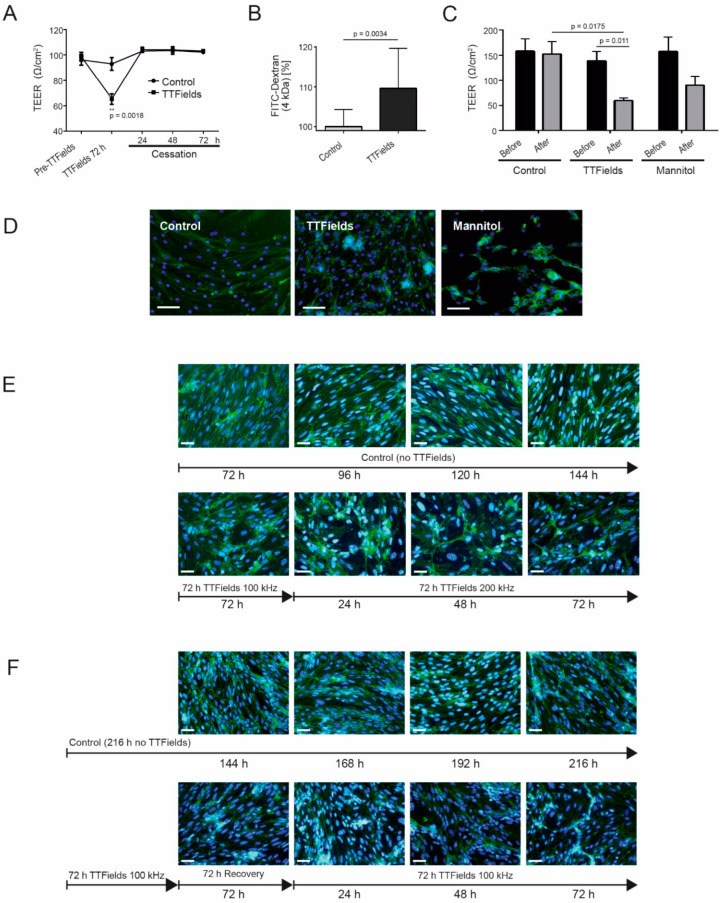Figure 3.
While TTFields did not affect cerebEND cell viability, they altered BBB integrity and permeability repeatedly. (A) TEER was measured before (pre-TTFields), directly after 72 h treatment with TTFields at 100 kHz, and during a 72 h recovery period (cessation). Asterisks indicate significant differences compared to the control of the same time point. (B) TTFields effects at 100 kHz on cell permeability were evaluated by a FITC-dextran permeability assay. (C) cerebEND cells were treated with either TTFields at 100 kHz for 72 h or 1.4 M mannitol for 24 h. The values shown in (A–C) are the mean of three independent experiments. Statistical significance was evaluated using an unpaired two-tailed Student’s t-test. (D) Immunofluorescence staining of cells under the same treatment conditions. (E) cerebEND cells treated with TTFields at 100 kHz for 72 h followed by 200 kHz for 24–72 h. Images shown are post-100 kHz TTFields treatment. (F) cerebEND cells treated with TTFields at 100 kHz for 72 h followed by recovery for 72 h and a repeated 100 kHz treatment for 72 h. Images shown are post-72 h recovery from the first and succeeding second treatment from 24 to 72 h. Cells shown in (D–F) were stained with claudin-5 antibody and conjugated to Alexa Fluor 488 (green). Nuclei were stained with DAPI (blue), magnification 40×, scale bars = 50 (D) and 200 µm (E,F), respectively. Shown are representative images of n = 3 independent experiments.

